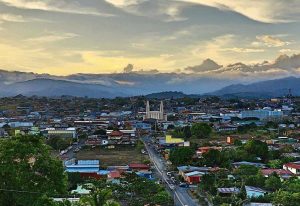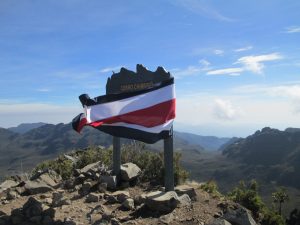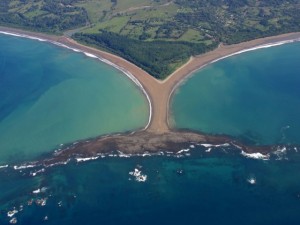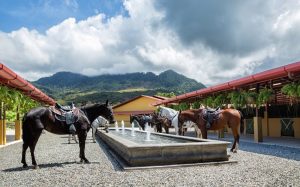I am bullish on growth in the Southern Zone. That should be clear from a post I wrote some time ago entitled, 10 Reasons to Invest in the Costa Rica Southern Zone.
It’s also where I live and work. I love this place, so I’ll readily admit bias.
Nevertheless, I believe the logic for growth in the Costa Rica southern zone is compelling and here are a few reasons why.
San Isidro de El General – Gateway City on the Move
San Isidro de El General is the gateway city to the Costa Rica southern zone. It is also Costa Rica’s second largest city outside of the GAM (gran area metropolitana), which consists of San Jose, Heredia, Alajuela and Cartago. According to the 2011 census, San Isidro has a population of around 50,000. However, the entire county, or canton, of Perez Zeledon has a population closer to 150,000 according to the 2011 census (and today around 200,000).
Costa Rica’s Highest Mountains and a Gorgeous Coastline
The city is nestled in the valley between Costa Rica’s highest mountain, Cerro Chirripo at 3,820 meters (12,533 feet) and the southern Pacific coast. In fact, there’s no place in the country where seriously high mountains and coast are located in such close proximity. From most locations in and around San Isidro, you can drive to the beach over a well-maintained, paved, road in less than an hour.
Chirripo National Park is a major tourist destination. It is a 2-day hike to reach the summit of Cerro Chirripo and it ranks as one of Costa Rica’s most spectacular experiences. From the summit of Chirripo it’s possible to see both of Costa Rica’s coasts, Pacific and Caribbean, on a clear day!
Perez Zeledon – An Amazing Canton
The county of Perez Zeledon is dotted with small towns, many located at relatively high elevations, that are 30 minutes or less from the city. These towns are popular areas with expats due to their charming ambiance and almost perfect year-round climate. The ability to easily reach the coast in an hour, or less, making for an easy day-trip to the beach, is likewise alluring.
Future Airport Development
Now, here’s a little inside information about the future of San Isidro. You should know that there is an airport in town. Over the years it hasn’t received a lot of use, but all that’s about to change. There are plans for a major airport expansion, as well as large-scale development of an “airport city” in that area. According to reliable sources, hiring is already underway and ground will be broken very soon. The idea is for San Isidro to be the southern zone hub, making the long-awaited rumors of a major airport in the zone a reality.
The Costa Ballena – The “Big Sur” of Costa Rica
The coastal areas of the southern zone are perhaps some of the most scenic and pristine in the country. I often refer to the Costa Ballena, which extends from Dominical to points south of Ojochal, as the “big sur” of Costa Rica, due to the coastal range that hugs the coastline. The beaches of Dominical, Uvita and Ojochal have become “expat havens” due to the great waves, incredible views and ability to somewhat beat the heat by buying and building at elevations of 300 to 500 meters up. The Costanera Highway, which links all these beaches, is one of the most well-maintained roads in the country and you can zip from one beach to another in minutes.
The Osa and Proximity to the Southern Border
The Costanera links with the Pan American in Palmar Norte and from there it’s a 3 hour drive to the Panama border, which offers great shopping and better prices for imported goods than one will generally find elsewhere in Costa Rica. Along the way it’s possible to make detours over to the Osa Peninsula, which is home to the Corcovado National Park, a place National Geographic once called the “most biodiverse location on planet earth.”
Just off the coast from Drake Bay lies Isla del Caño, an island surrounded by a coral reef, making it one of the best scuba diving and snorkeling locations in the country. You can reach the island via a short boat ride from Drake Bay, which is a very popular tourist destination on the Osa.
Controlled Growth Already Occurring
The secret of the southern zone is out. While growth has not exploded as it did in the Guanacaste region some years ago, it is definitely on the expat radar screen. At present there’s more inventory of land and homes than there are buyers. It’s a “buyer’s market” and good deals still can be had. That might change soon, however, as the growth story gets out.
The area has already seen large-scale private investment. A case in point is the 2-year old 5-star resort, AltaGracia, located in the small pueblo of Santa Teresa de Cajon, about a half-hour south of San Isidro. This was a $30 million dollar investment by the Volio coffee family of Costa Rica. The resort features one of the finest spas and equestrian centers that can be found anywhere in Central America. It also features its own landing strip for small planes. The resort is part of the Auberge collection of fine resorts worldwide.
The logic for growth in the Costa Rica southern zone is just too compelling for it not to become a future reality. Of course, there are many risks lurking on a geopolitical scale that could cause the U.S. and world economy to crash and burn. That would have effects throughout the country, as it did after the 2008 crash and ensuing “great recession.”
Nevertheless, barring such potential catastrophes, I believe the southern zone will see measured and steady growth in the coming years. The government of Costa Rica has vowed to be a throttle and mediator in order to prevent the uncontrolled growth experienced in Guanacaste and other areas. That’s a good thing because we don’t want growth and development to ruin the reasons why this area of Costa Rica is so alluring…it’s pristine and untouched nature and abundance of flora and fauna.




[…] that’s a sure sign that prices are going up…and how! Especially in the southern zone, growth is underway and that will likely put upward pressure on […]